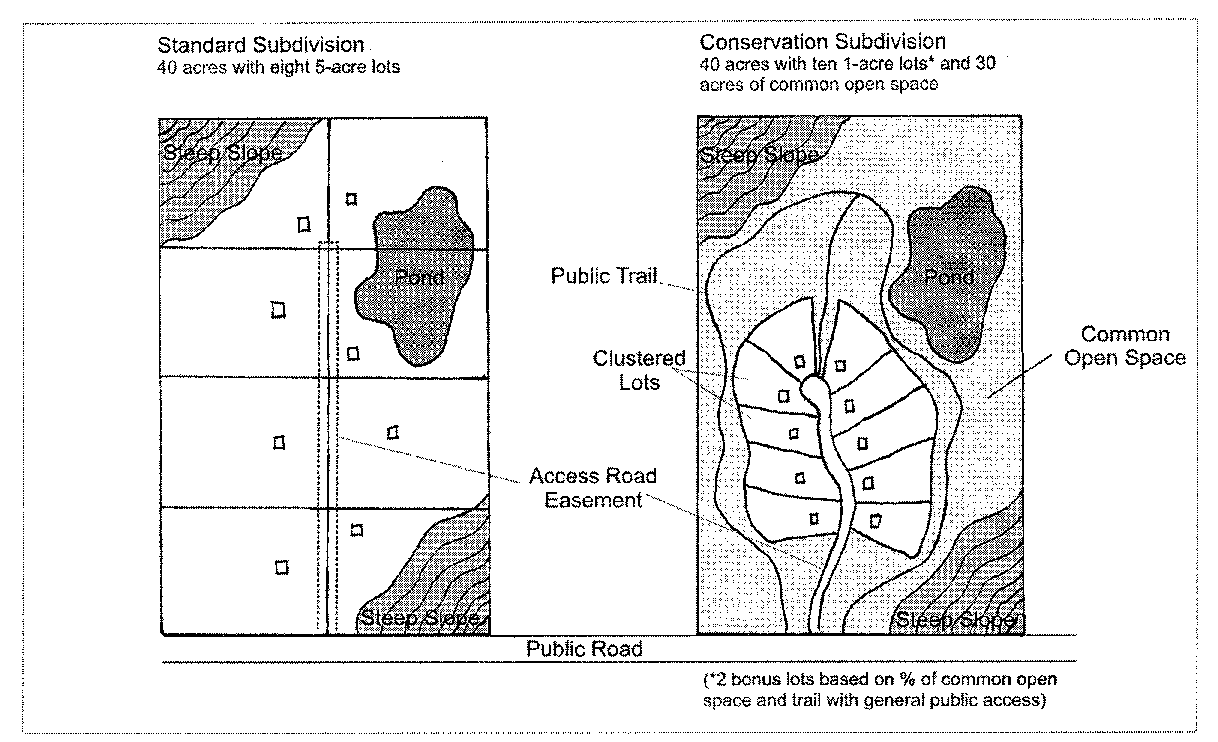A "conservation subdivision" is a subdivision where lots are clustered in specific areas to allow the remaining land to be used for recreation, open space, agriculture and/or preservation of features and/or structures with environmental, historical, cultural or other significance. "Conservation subdivisions" may include the following terms:
CLUSTER LOT: A cluster lot is a lot in a conservation subdivision (typically smaller than the minimum lot size for the applicable zoning district) in which residential development can occur.
COMMON OPEN SPACE: A part of a conservation subdivision that is set aside in perpetuity as open space. This area may include freshwater wetlands, floodplains or flood hazard areas, stream corridors, recreational areas, prime agricultural lands, wildlife habitat, scenic views, historical or cultural features, archaeological sites, or other land to be protected from development, as well as easements for public utilities.
CONSERVATION LOT: A large (larger than the minimum lot size for the applicable zoning district) privately owned (not common) lot in a conservation subdivision. Such lot may incur a dwelling unit, but it will count against the overall density of a subdivision. A conservation lot may be an alternative to common open space. For example, a property owner can subdivide a portion of property into a number of smaller cluster lots and retain most of the acreage for him or herself.
DEVELOPMENT RESERVE LOT:
A. An area in a conservation subdivision that is set aside for future development opportunities. For example, owners of suburban zoned land that do not yet have all urban services may choose to create a conservation subdivision to cluster lots and create a development reserve lot that allows for future development once urban water and sewer services are provided on the land.
B. Property owners can choose to utilize a combination of lot types. For instance, it is possible to have both a conservation lot and common open space in a conservation subdivision.

(Ord. 501, 11-18-2008)